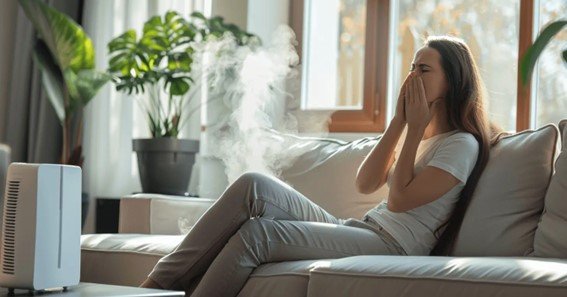Indoor air pollution refers to the presence of harmful substances in the air inside buildings, including homes, offices, and schools. These pollutants can originate from various sources such as household products, building materials, and even outdoor air that enters through windows and ventilation systems. Understanding and addressing indoor air pollution is crucial for maintaining a healthy living environment.
What is Indoor Air Pollution?
Indoor air pollution occurs when pollutants from various sources accumulate inside buildings. These pollutants can include gases, chemicals, and biological contaminants that can negatively impact the air quality. Unlike outdoor pollution, which is often dispersed by wind, indoor pollutants can become trapped inside, leading to higher concentrations and increased health risks.
Common Sources of Indoor Air Pollution
Some of the most common sources of indoor air pollution include:
- Household Products: Cleaning supplies, air fresheners, and paints often release volatile organic compounds (VOCs), which can degrade indoor air quality.
- Building Materials: New carpets, pressed wood products, and insulation materials can emit harmful chemicals like formaldehyde.
- Combustion Sources: Gas stoves, heaters, and fireplaces can release carbon monoxide and other dangerous gases if not properly ventilated.
- Biological Contaminants: Mold, dust mites, and pet dander are common indoor allergens that can contribute to air pollution.
Health Effects of Indoor Air Pollution
Exposure to indoor air pollution can lead to a variety of health issues. Short-term effects may include irritation of the eyes, nose, and throat, headaches, dizziness, and fatigue. Long-term exposure can lead to more serious conditions such as respiratory diseases, heart disease, and even cancer. Those with pre-existing health conditions, children, and the elderly are especially vulnerable.
How to Improve Indoor Air Quality
To reduce indoor air pollution and improve air quality, consider the following steps:
- Increase Ventilation: Open windows regularly, use exhaust fans, and ensure your HVAC system is functioning properly to bring in fresh air and remove pollutants.
- Use Air Purifiers: Air purifiers with HEPA filters can help remove particulate matter and allergens from the air.
- Control Humidity Levels: Maintain indoor humidity between 30% and 50% to prevent mold growth and reduce dust mites.
- Choose Low-VOC Products: Opt for low-VOC paints, cleaning supplies, and building materials to minimize the release of harmful chemicals into the air.

FAQ
What is indoor air pollution?
Indoor air pollution refers to the contamination of indoor air by pollutants like VOCs, particulate matter, and biological contaminants.
What are the main sources of indoor air pollution?
Common sources include household products, building materials, combustion appliances, and biological contaminants such as mold and pet dander.
How does indoor air pollution affect health?
It can cause short-term effects like headaches and throat irritation, as well as long-term conditions such as respiratory diseases and cancer.
How can I improve indoor air quality?
Improving ventilation, using air purifiers, controlling humidity levels, and choosing low-VOC products are effective ways to enhance indoor air quality.
Why is indoor air pollution a concern?
People spend up to 90% of their time indoors, making indoor air quality critical for overall health and well-being.










